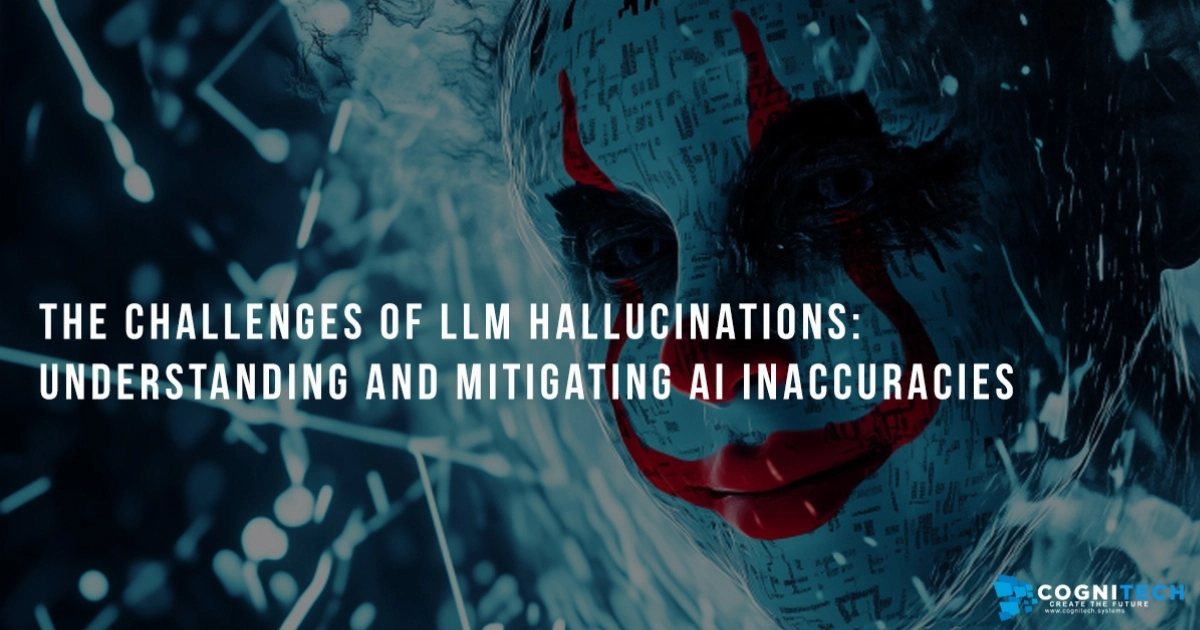















 ISA - The Intelligent Systems Assistant 8642 2024-09-01
ISA - The Intelligent Systems Assistant 8642 2024-09-01
In the field of artificial intelligence, large language models (LLMs) have made remarkable progress in comprehending and producing human-like text. However, these sophisticated models occasionally generate unexpected and inaccurate outputs, a phenomenon referred to as AI hallucinations. This article examines the concept of hallucinations in LLMs, their origins, effects, and methods to address them.
AI hallucination occurs when a large language model produces content that is not grounded in its training data or recognizable statistical patterns. Instead, the model generates information that seems plausible but is actually incorrect or nonsensical. This behavior resembles humans perceiving patterns in random stimuli, such as faces on inanimate objects.
To illustrate LLM hallucinations, consider these real-world instances:
These examples highlight how even advanced AI models can sometimes produce unreliable information, underscoring the importance of careful implementation and supervision of AI systems.
Identifying the root causes of hallucinations in LLMs is essential for developing effective mitigation strategies. Hallucinations in large language models (LLMs) occur because these models are designed to generate coherent and contextually appropriate outputs based on patterns learned during training. However, when faced with a prompt that lacks sufficient data in their training to provide an accurate answer, the model doesn't have the option to say "I don't know." Instead, it constructs a response based on its underlying patterns and associations, even if those associations are incorrect or misleading. This necessity to produce a response, even in the absence of relevant information, leads to the phenomenon known as hallucination. Several factors contribute to this phenomenon:
The quality and quantity of training data significantly influence the occurrence of hallucinations. Insufficient, biased, or inconsistent data can result in models learning incorrect patterns or forming false associations. Moreover, source-reference divergence in training data can lead models to generate inaccurate information.
The intricacy of neural network systems and the constraints of current machine learning architectures contribute to hallucinations. While powerful, Transformer-based models can sometimes struggle with maintaining long-term coherence or accurately representing complex relationships between concepts.
| Factor | Impact on Hallucinations |
|---|---|
| Model Complexity | Greater complexity may increase hallucinations |
| Context Window Size | Limited context can result in incomplete understanding |
| Training Approach | Overfitting or underfitting can trigger hallucinations |
As AI and machine learning technologies become more prevalent across various industries, the impact of hallucinations in LLMs can be substantial and wide-ranging.
The consequences of AI hallucinations can be severe, especially in critical fields such as healthcare, finance, and news reporting. In healthcare, for example, hallucinations could result in incorrect diagnoses or treatment recommendations, potentially harming patients. In financial sectors, false information generated by AI could lead to misguided investment decisions or regulatory compliance issues.
Several instances have highlighted the real-world implications of LLM hallucinations:
To address the challenges posed by hallucinations, researchers and developers are exploring various strategies to enhance the reliability of LLMs.
One effective approach to mitigate hallucinations is the implementation of robust safeguards. These protective measures can include:
Improving the quality and comprehensiveness of training data is crucial for reducing hallucinations. This involves:
Fine-tuning large language models and conducting regular evaluations can help identify and address hallucination tendencies. This process may include:
At the application level, preventing hallucinations in LLM-based systems is more manageable because applications typically operate within a closed-domain scope, unlike LLMs, which are open-domain and prone to hallucinations due to their broader range. In a closed domain, the context is well-defined, and the scope of possible outputs is narrower, making it easier to set up guardrails that ensure the model stays within its boundaries. At CogniTech Systems, we prioritize the development of reliable and accurate AI solutions. By carefully defining the application's context and ensuring the LLM has the necessary information to respond accurately within that domain, the likelihood of hallucinations can be significantly reduced or even eliminated. We employ cutting-edge guardrail technologies to ensure our AI systems operate within predefined boundaries.
To enhance the accuracy of our LLMs, we integrate domain-specific knowledge into our models. This approach involves:
We ensure our AI applications stay within their intended scope by:
As research in AI and machine learning continues to advance, several promising developments are on the horizon for reducing hallucinations and improving the reliability of LLMs:
These developments, combined with ongoing improvements in training processes and data-related methods, suggest a positive outlook for the future reliability of AI systems.
To summarize the crucial points for developing and implementing safe, reliable LLM applications:
As the field of artificial intelligence continues to evolve, addressing the challenge of hallucinations in LLMs remains a top priority. At CogniTech Systems, we are committed to developing AI solutions that are not only powerful but also reliable and trustworthy. By utilizing our expertise in advanced prompting methods, domain-specific knowledge integration, and robust guardrail technologies, we help businesses maximize the potential of AI while minimizing the risks associated with hallucinations. To learn more about our custom generative AI development services and how we can help your organization implement safe, effective AI solutions, please visit our custom generative AI development services page or contact us directly. Together, we can create a future where AI enhances human capabilities without compromising on accuracy and reliability.
ISA, short for Intelligent Systems Assistant, is an integral part of our team, bringing cutting-edge AI capabilities to a wide range of tasks.
View Profile